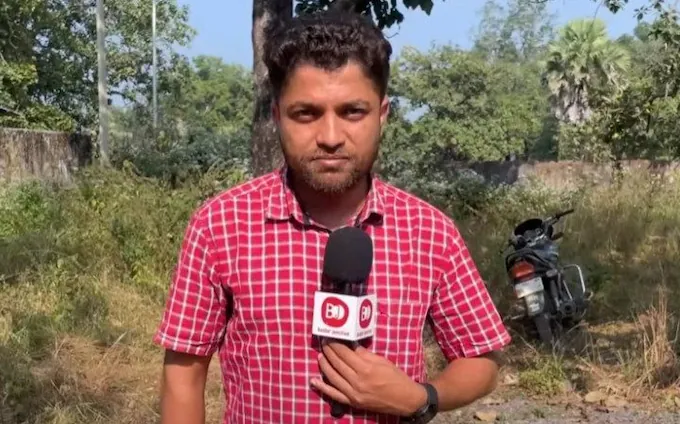The tragic death of Mukesh Chandrakar, a fearless investigative journalist from India’s Chhattisgarh state, has gripped the nation, exposing the dangerous reality faced by journalists who dare to uncover corruption. Chandrakar’s body was discovered on January 3 in a septic tank in Bijapur district, just days after he went missing on New Year’s Day. The brutality of his murder, coupled with its suspected links to his reporting, has sparked outrage and calls for justice.
Chandrakar, 32, was the face behind Bastar Junction, a YouTube channel dedicated to exposing corruption and malpractice in the region’s construction industry. His fearless investigations often delved into the murky dealings of public works projects, including a recent exposé on irregularities in a road construction project in the Bastar region. That report allegedly triggered a government probe—an act that may have sealed his fate.
The details of his death are harrowing. A post-mortem examination revealed that Chandrakar suffered blunt-force injuries to his head and ribs, a broken neck, and, in a macabre twist, his heart had been removed. Such gruesome details point to a crime fueled by rage, retaliation, or perhaps a message meant to silence dissent. Four suspects have been arrested, including three of Chandrakar’s relatives, raising suspicions of betrayal from within his own family.
Chhattisgarh Chief Minister Vishnu Deo Sai called the murder “heartbreaking” and assured the public that the perpetrators would face the “harshest punishment.” The Press Council of India has demanded a detailed report on the case, reflecting the gravity of the situation.
Chandrakar’s death is not just a personal tragedy but a symbol of a larger crisis. India ranks 159 out of 180 countries in the 2024 World Press Freedom Index, with investigative journalism becoming an increasingly perilous endeavor. Reporters Without Borders estimates that three to four journalists are killed annually in India for their work, often in cases linked to corruption, politics, or organized crime.
For Chandrakar, reporting was a calling that came with high stakes. His work on Bastar’s infrastructure projects challenged powerful interests in a region long plagued by systemic corruption and inadequate governance. While his investigations earned him respect and a growing following, they also made him a target for those seeking to protect their vested interests.
The involvement of his relatives in the case adds another layer of intrigue and betrayal. Were they complicit in silencing him, or were they coerced by powerful figures seeking revenge? These questions loom large as investigators work to piece together the motive and connections behind the crime.
Chandrakar’s murder has reignited debates about press freedom and journalist safety in India. Critics argue that the country’s weak protections for journalists embolden those who seek to silence them, particularly in rural and conflict-prone regions like Chhattisgarh. Advocacy groups are urging the government to strengthen laws that protect whistleblowers and investigative journalists, along with ensuring swift and fair justice for crimes against the press.
Beyond its immediate legal and political implications, Chandrakar’s death serves as a stark reminder of the sacrifices made by journalists in their pursuit of truth. His work illuminated corruption and demanded accountability, leaving a legacy of courage and determination.
As India watches this case unfold, it is not just about justice for Mukesh Chandrakar—it is about defending the right to report freely in a democracy. His death is a call to action for stronger protections for journalists, greater accountability for those who commit violence against them, and a renewed commitment to upholding press freedom in the face of adversity.




